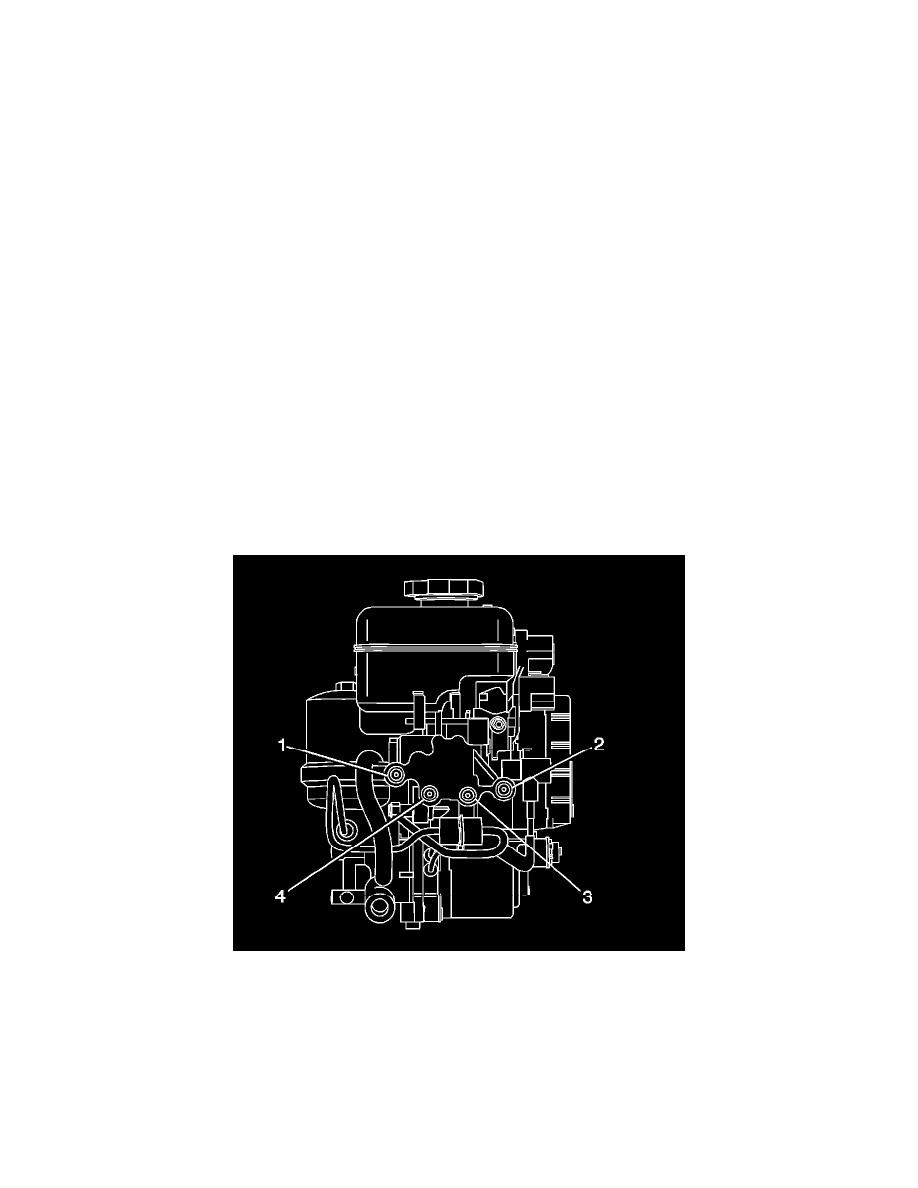H3 V8-5.3L (2008)

Brake Bleeding: Service and Repair
Hydraulic Brake System Bleeding (Manual with RPO BRM)
Hydraulic Brake System Bleeding (Manual with RPO BRM)
Caution: Refer to DOT 4 Brake Fluid Caution (See: Brakes and Traction Control/Service Precautions/Technician Safety Information/DOT 4 Brake
Fluid Caution) .
Caution: Refer to Brake Fluid Irritant Caution (See: Brakes and Traction Control/Service Precautions/Technician Safety Information/Brake Fluid
Irritant Caution) .
Caution: Do not remove the reservoir cap while depressing and releasing the brake pedal. If the cap is removed while depressing and releasing the
brake pedal, pressurized brake fluid being returned to the reservoir may leave the reservoir. Personal injury or vehicle damage could result.
Notice: Refer to Brake Fluid Effects on Paint and Electrical Components Notice (See: Brakes and Traction Control/Service Precautions/Vehicle
Damage Warnings/Brake Fluid Effects on Paint and Electrical Components Notice) .
Notice: When adding fluid to the brake fluid reservoir or to the clutch fluid reservoir, use only GM Vehicle Care Brake and Clutch Fluid Super DOT-4,
GM P/N 88958860 (Canadian P/N 88901244), or equivalent DOT-4 brake fluid from a clean, sealed container. This polyglycol brake fluid is
hygroscopic and absorbs moisture. Do not use fluid from an open container that may be contaminated with water. Improper or contaminated fluid could
result in damage to the system components.
Notice: Do Not allow the HBCi pump and motor to run more than 1 minute continuously. Allow 2 minutes cool down time between pump run times.
Extended pump and motor run time could create excessive heat, and damage the pump and motor assembly.
1. Place a clean shop cloth beneath the brake master cylinder to prevent brake fluid spills.
2. If you disconnected the brake pipes from the master cylinder, you must perform the following steps:
1. Ensure that the brake master cylinder reservoir is full to the maximum-fill level. If necessary add brake and clutch fluid Super DOT-4, GM P/N
88958860 (Canadian P/N 88901244), or equivalent DOT-4 brake fluid from a clean, sealed brake fluid container.
If removal of the reservoir cap and diaphragm is necessary, clean the outside of the reservoir on and around the cap prior to removal.
2. With all brake pipes installed securely to the master cylinder, loosen and separate the left front brake pipe (4) from the left front port of the
brake master cylinder.
3. Allow a small amount of brake fluid to gravity bleed from the open port of the master cylinder.
4. Reconnect the brake pipe to the master cylinder port and tighten securely.
5. Have an assistant slowly depress the brake pedal fully and maintain steady pressure on the pedal.
6. Loosen the same brake pipe to purge air from the open port of the master cylinder.
7. Tighten the brake pipe, then have the assistant slowly release the brake pedal.
8. Wait 15 seconds, then repeat steps 2.5-2.7 until all air is purged from the same port of the master cylinder.
9. With the left front brake pipe (4) installed securely to the master cylinder, after all air has been purged from the left front port of the master
cylinder, loosen and separate the right front brake pipe (3) from the master cylinder, then repeat steps 2.5-2.8.
